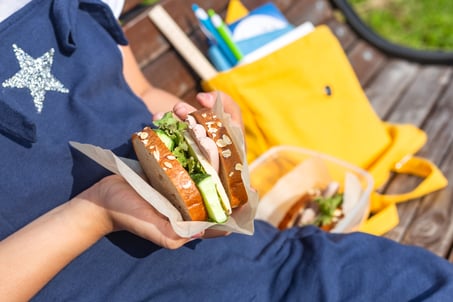 As many of us are confronted with the decision of whether to send our children back to school or continue with online learning, we are faced with many questions that we had never had to ask ourselves before. Breakfast, lunch, and often snacks are mainly consumed during these hours at school, so as we continue to see Indiana trying to return to normal and reopen, we might need to tailor our eating habits to ensure we are not risking unnecessary exposure to COVID-19 when refueling our bodies throughout the day. These ideas also work for adults who are returning to the workplace or have already returned to the workplace.
As many of us are confronted with the decision of whether to send our children back to school or continue with online learning, we are faced with many questions that we had never had to ask ourselves before. Breakfast, lunch, and often snacks are mainly consumed during these hours at school, so as we continue to see Indiana trying to return to normal and reopen, we might need to tailor our eating habits to ensure we are not risking unnecessary exposure to COVID-19 when refueling our bodies throughout the day. These ideas also work for adults who are returning to the workplace or have already returned to the workplace.
Keep in mind, you want each meal to be comprised of plenty of fruits and veggies (half of your plate), while one quarter of your plate is filled with a protein, and the remaining quarter is filled with a minimally processed grain like brown rice or whole-wheat pasta. Make sure to use leftovers to make the next day’s meal prep easy—think large-batch cooking. Snacks should have a protein (such as nuts, peanut butter, etc.) along with a high-fiber carbohydrate like a piece of fruit (think banana or apple) to keep you feeling satisfied throughout the day.
Tips for Safe Eating at Schools and Work
Here are some actions to consider when eating meals at work or school amid a pandemic:
- Cut back on items that require heating up in the microwave to avoid touching a community microwave.
- Use a thermos if you would like to take hot items (such as coffee or soup).
- Pack a bottle of water (drinking fountains are likely to be closed).
- Practice “hands-free” snacking. An example for kids: toothpicks already placed into small sandwich squares that they can pick up like an hors d’oeuvre makes for a fun and safe way to eat finger foods!
- Use packaging to avoid touching food prior to ingesting food items.
- Practice good hand hygiene. Scrub with soap and water for a minimum of 20 seconds and don’t touch other items prior to eating.
- Bring your own utensils, napkins, and condiments.
- Vary the times you visit the cafeteria if possible to avoid high-traffic times.
- Keep your mask on as long as possible and try to sit at least 6 feet apart.
Meal and Snack Ideas
Take a look at some of these meal and snack ideas and give them a try. Keep in mind that these are suggestions, and I hope they provide inspiration. Although they don’t cut out your risk 100 percent, every little bit helps during this crazy time.
Breakfast Ideas
- Smoothie: 1-2 cups of frozen fruit, a handful of leafy greens, a spoonful of peanut butter, and milk of your choice blended to your preferred consistency. Pack in a thermos and bring your own straw.
- A banana and a squeezable almond butter packet (such as Justin’s).
- Overnight oats: soak rolled oats in milk in the fridge overnight with a dollop of peanut butter. Add fresh or frozen fruit on top. Eat cold or throw in the microwave before leaving the house (it retains heat well!).
Lunch Ideas
- Sandwiches on whole-wheat bread: wrap in parchment paper to avoid touching the sandwich when eating it. Skip the deli meats and try to load up on colorful and crunchy veggies with hummus in this option.
- Pasta salad: bring your own utensils. Make a big batch of whole-wheat pasta and sautéed veggies and toss with balsamic vinegar and olive oil in the morning. Toss in a can of pinto beans or a handful of pine nuts for an easy protein.
- Spinach salad: top with carrots, cherry tomatoes, walnuts, and chickpeas. Toss dressing on at lunch.
Snacks and Sides Ideas
- Squeezable applesauce pouches
- Larabars
- Mamma Chia Squeeze pouch
- Yogurt with a banana—I love the Silk soy yogurt for a dairy-free option
- Individual bags of prepopped popcorn (try pouring it into your mouth straight from the bag—it might not look graceful at times, but it keeps your fingers out of your mouth!)
- Precut fruit salad (apples, strawberries, blueberries, etc.)
- Precut/bite-sized carrots, cucumber, and celery that you can easily stab with a fork or toothpick and dip into a little hummus
***
While this is not an easy time for anyone, trying to keep up your routine in eating habits is important so that your body is properly fueled and healthy. Best of luck this year, and stay healthy!
This blog was written by Lindsey Hehman, MA, RD, CD. To learn more about the NIFS bloggers, click here.


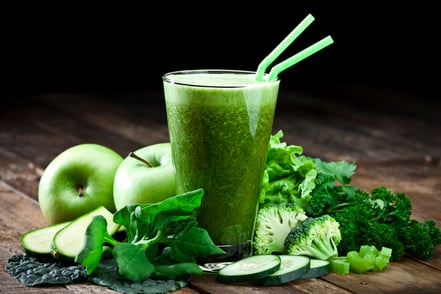 We’ve all been here before: When it seems the long, gray winter will never end and you make one more pot of hearty vegetable soup or another casserole; or when the lackluster tomatoes and almost pinkish-white strawberries just aren’t cutting it. It’s time to get creative!
We’ve all been here before: When it seems the long, gray winter will never end and you make one more pot of hearty vegetable soup or another casserole; or when the lackluster tomatoes and almost pinkish-white strawberries just aren’t cutting it. It’s time to get creative!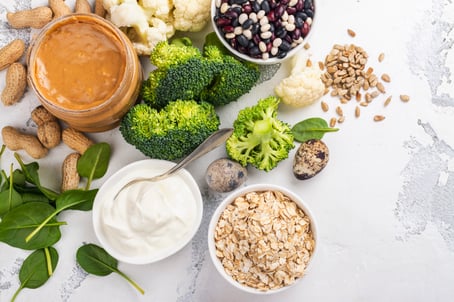 Mondays can be hard enough, getting back into the swing of things after a much-too-short weekend. The last thought on your mind is what to cook for dinner, right? You might go out to eat instead, pick up carryout, or eat a frozen pizza for the most painless dinner prep possible. However, what if you opt for something that is not only easy for you, but also healthy for you and the planet?
Mondays can be hard enough, getting back into the swing of things after a much-too-short weekend. The last thought on your mind is what to cook for dinner, right? You might go out to eat instead, pick up carryout, or eat a frozen pizza for the most painless dinner prep possible. However, what if you opt for something that is not only easy for you, but also healthy for you and the planet?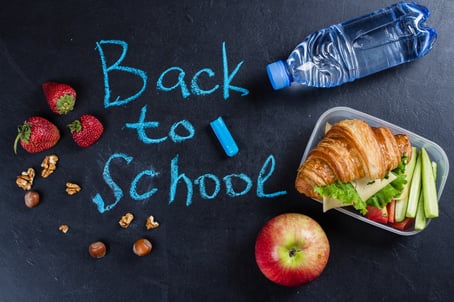 Whether you are starting your first year in college, sending your kids off to school, or are teaching classes this school year, make sure that your nutrition stays at the top of your priority list. It can be easy to get bogged down in your day-to-day routine and quickly lose sight of your goals. Follow these steps to help you stay on track this year.
Whether you are starting your first year in college, sending your kids off to school, or are teaching classes this school year, make sure that your nutrition stays at the top of your priority list. It can be easy to get bogged down in your day-to-day routine and quickly lose sight of your goals. Follow these steps to help you stay on track this year.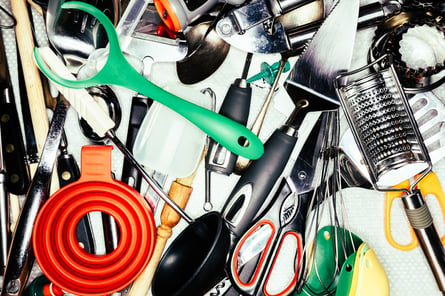 When my husband and I got married and combined our kitchens, he was appalled at the amount of gadgets that filled my drawers and cabinets. I have always loved the single-use items such as the pineapple peeler and corer, the avocado slicer, the strawberry-top remover, the banana case keeper—and the list goes on and on and on!
When my husband and I got married and combined our kitchens, he was appalled at the amount of gadgets that filled my drawers and cabinets. I have always loved the single-use items such as the pineapple peeler and corer, the avocado slicer, the strawberry-top remover, the banana case keeper—and the list goes on and on and on!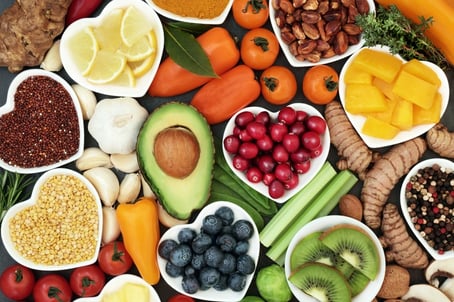 Are you one of those people who are always hungry? Are you constantly thinking about your next meal or snack and what you’re going to eat? The issue could be that you aren’t choosing meals or snacks that fill you up and keep you satisfied. So the alternative is grazing constantly to get that full feeling.
Are you one of those people who are always hungry? Are you constantly thinking about your next meal or snack and what you’re going to eat? The issue could be that you aren’t choosing meals or snacks that fill you up and keep you satisfied. So the alternative is grazing constantly to get that full feeling. We’ve all heard the phrase that an apple a day keeps the doctor away, but who knew that eating a balanced diet would also make you more productive at work? That’s what was found in a
We’ve all heard the phrase that an apple a day keeps the doctor away, but who knew that eating a balanced diet would also make you more productive at work? That’s what was found in a  The food truck phenomenon started in 2008 in California with a truck called
The food truck phenomenon started in 2008 in California with a truck called  Has dinnertime become the dreaded time lately? Getting picky children to eat can be very frustrating. Children of different ages may respond differently to various tactics. Here are a few ideas for how you can get your child to try (and hopefully like) new foods, and get better nutrition.
Has dinnertime become the dreaded time lately? Getting picky children to eat can be very frustrating. Children of different ages may respond differently to various tactics. Here are a few ideas for how you can get your child to try (and hopefully like) new foods, and get better nutrition.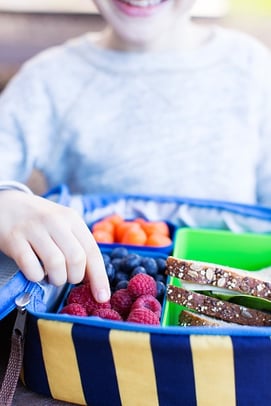 It’s that time of year again…back to school! This means busy evenings or early mornings getting lunches packed for the kids.
It’s that time of year again…back to school! This means busy evenings or early mornings getting lunches packed for the kids. 